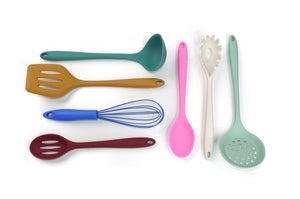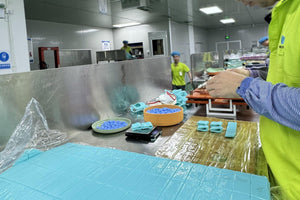Silicone rubber is a versatile and widely used elastomer in many industries, from medical devices and kitchenware to automotive and aerospace applications. Its popularity stems from its flexibility, durability, heat resistance, and non-toxic properties. However, one of the most intriguing properties of silicone rubber is its heat resistance and behavior at different temperatures, particularly concerning its melting point.
In this article, we will explore the concept of melting points in silicone rubber, why it behaves differently compared to other materials, and the temperature ranges for various types of silicone rubber.
Understanding Silicone Rubber
Before diving into melting points, it is important to understand the structure of silicone rubber. Unlike conventional organic rubbers, silicone rubber is a synthetic elastomer made from silicon, oxygen, carbon, and hydrogen. It has a backbone made of alternating silicon (Si) and oxygen (O) atoms, known as a siloxane chain, which gives it unique thermal and mechanical properties.![]()
Silicone rubber can be categorized into several types based on its formulation, curing mechanism, and intended application. Some of the most common types include:
-
High-Temperature Vulcanizing (HTV) Silicone Rubber
-
Room-Temperature Vulcanizing (RTV) Silicone Rubber
-
Liquid Silicone Rubber (LSR)
-
Fluorosilicone Rubber (FVMQ)
-
Medical-Grade Silicone Rubber
-
Food-Grade Silicone Rubber
Each of these silicone rubber types has specific properties, including different heat resistance levels.
Do Silicone Rubbers Melt?
The concept of a melting point typically applies to crystalline solids, where the material changes from solid to liquid at a specific temperature. However, silicone rubber is an amorphous elastomer, meaning it does not have a well-defined crystalline structure. Instead, it behaves more like a thermoset polymer.
What Is a Thermoset Polymer?
Thermoset polymers, including silicone rubber, undergo a crosslinking process during curing that makes them set into a fixed shape. Once cured, they cannot be melted or reshaped like thermoplastics. Instead of melting, silicone rubber begins to degrade or lose its mechanical integrity at very high temperatures.
This degradation temperature is often mistaken as the "melting point", but in reality, silicone rubber does not melt. Instead, it breaks down chemically.
Thermal Properties of Silicone Rubber
Silicone rubber is known for its exceptional thermal stability. Depending on the type, silicone rubber can withstand temperatures ranging from -60°C to over 300°C (-76°F to 572°F). It remains flexible and functional across this wide temperature range.
However, beyond a certain threshold, silicone rubber begins to degrade. This threshold varies depending on the type of silicone rubber and its formulation.
Melting (Degradation) Points of Different Silicone Rubber Types
1. High-Temperature Vulcanizing (HTV) Silicone Rubber
HTV silicone rubber is solid silicone rubber that cures under heat and pressure. It is often used for industrial, automotive, and aerospace applications due to its excellent heat resistance.
-
Temperature Range: -60°C to 250°C (-76°F to 482°F)
-
Degradation Temperature: Begins to degrade at around 300°C (572°F).
HTV silicone rubber is particularly valued for its durability and performance in high-heat environments, such as engine gaskets and seals.
2. Room-Temperature Vulcanizing (RTV) Silicone Rubber
RTV silicone rubber is a two-component or single-component silicone rubber that cures at room temperature. It is often used in mold-making, sealing, and prototyping applications.
-
Temperature Range: -50°C to 200°C (-58°F to 392°F)
-
Degradation Temperature: Starts degrading at around 250°C to 300°C (482°F to 572°F).
Although RTV silicone rubber is not as heat-resistant as HTV, it is easy to use and ideal for applications that do not require exposure to extreme heat.
3. Liquid Silicone Rubber (LSR)
LSR is a liquid form of silicone rubber that is injection-molded into various products. It is widely used for medical devices, baby products, and food-grade items.
-
Temperature Range: -50°C to 200°C (-58°F to 392°F)
-
Degradation Temperature: Approximately 250°C to 300°C (482°F to 572°F).
LSR offers excellent thermal stability, non-toxicity, and flexibility, making it ideal for sensitive applications like baby bottle nipples and medical tubing.
4. Fluorosilicone Rubber (FVMQ)
Fluorosilicone rubber is a specialized type of silicone rubber that combines the properties of silicone rubber with improved chemical and fuel resistance.
-
Temperature Range: -60°C to 230°C (-76°F to 446°F)
-
Degradation Temperature: Begins degrading at approximately 280°C to 320°C (536°F to 608°F).
Fluorosilicone is particularly useful in aerospace and automotive applications, where exposure to fuels and extreme temperatures is common.
5. Medical-Grade Silicone Rubber
Medical-grade silicone rubber is designed to meet strict biocompatibility and safety standards for medical and healthcare applications.
-
Temperature Range: -50°C to 200°C (-58°F to 392°F)
-
Degradation Temperature: Around 250°C to 300°C (482°F to 572°F).
This type of silicone is used for implants, catheters, and other medical devices that require heat resistance, flexibility, and biocompatibility.
6. Food-Grade Silicone Rubber
Food-grade silicone rubber is certified for safe use with food and beverages. It is commonly found in kitchenware, baking mats, and food storage products.
-
Temperature Range: -40°C to 230°C (-40°F to 446°F)
-
Degradation Temperature: Starts degrading at around 250°C to 280°C (482°F to 536°F).
Food-grade silicone rubber is ideal for cooking and baking applications because it remains stable and does not release toxic fumes or chemicals at high temperatures.
Factors That Affect Heat Resistance of Silicone Rubber
While silicone rubber is inherently heat-resistant, several factors can influence its thermal performance:
-
Curing Process: The method of curing (e.g., addition curing, peroxide curing) affects the heat stability of silicone rubber.
-
Filler Materials: Additives and fillers can improve or reduce the heat resistance of silicone rubber.
-
Thickness of the Material: Thicker silicone rubber can withstand higher temperatures compared to thinner sections.
-
Exposure Duration: Prolonged exposure to high heat can accelerate degradation.
-
Environment: The presence of oxygen, chemicals, or moisture can influence the rate of thermal degradation.
Conclusion
Silicone rubber is a remarkable material that does not have a true "melting point" due to its amorphous structure and thermoset nature. Instead of melting, it begins to degrade at high temperatures. The specific temperature at which degradation occurs depends on the type of silicone rubber:
-
HTV Silicone Rubber: ~300°C (572°F)
-
RTV Silicone Rubber: ~250°C to 300°C (482°F to 572°F)
-
LSR Silicone Rubber: ~250°C to 300°C (482°F to 572°F)
-
Fluorosilicone Rubber: ~280°C to 320°C (536°F to 608°F)
-
Medical-Grade Silicone Rubber: ~250°C to 300°C (482°F to 572°F)
About Author
We are dedicated to pushing the boundaries of possibility in silicone product manufacturing and our extensive range of inhouse designs and molds across baby, pet, homewares and more allows companies to customize and create products specific for their brand and market needs.
Whether you are looking for a company to bring your ideas and brand to life or looking for ready to go items with packaging and branding, WOLIFE is ready to help your business grow.
WOLIFE looks forward to collaborating with you!


 Using LSR in Hearing Components
Using LSR in Hearing Components Why Silicone Cooking Utensils and Baking Trays Don’t Melt – The Science Explained
Why Silicone Cooking Utensils and Baking Trays Don’t Melt – The Science Explained 10 Creative Products You Didn’t Know Could Be Made with Silicone
10 Creative Products You Didn’t Know Could Be Made with Silicone Common Quality Control Challenges in Silicone Manufacturing
Common Quality Control Challenges in Silicone Manufacturing